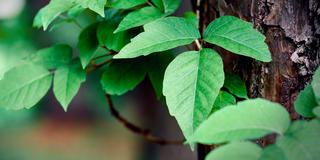
Poison ivy: Six questions for the researcher

Central State University horticulture professor Marcus Nagle, Ph.D., responds to a list of questions about poison ivy in a conversation with Land-Grant Communications and Media Relations Specialist Cyril Ibe. Nagle was recently tapped as a source for a report on local public radio station WYSO 91.3 on the menacing plant.

Q: Give us a horticulturist’s description of poison ivy.
A: Poison ivy is a woody vine or shrub. Its leaves are compound, trifoliate (3 leaflets) often with glands. It grows in disturbed areas, forest edges, and open fields. It is often an epiphyte (found growing on other plants). Its flowers are inconspicuous inflorescences. Poison ivy’s fruits are berries, turning from green to red when mature.
Q: We read and hear much about how climate change is a factor these days in the increase in numbers of poison ivy and how different they look. What’s the picture from a horticulturist’s point of view?
A: There is no conclusive evidence that there is anything different about poison ivy as a result of climate change. Some factors associated with climate change such as increased carbon dioxide in the atmosphere or extended growing season may give poison ivy a competitive advantage. It has been found to produce more biomass (grow faster) under elevated carbon dioxide levels.
Q: Any serious negative effects of climate change on poison ivy?
A: Increased pest and disease pressures are possible. Generally, poison ivy does not thrive in drier conditions.
Q: Poison ivy is not thought of with fondness. What unpleasant thing happens when someone has a brush with poison ivy?
A: Contact dermatitis is common in a large set of the population. Some cases can be quite severe. Direct contact with the plant should be avoided in any case.
Q: Are there any unique characteristics worth noting about poison ivy species native to Ohio, and southwest Ohio?
A: It’s been here for a long time and doesn’t look like it’s going anywhere. It appears to thrive in the environment of southwest Ohio. It is currently found in all counties.
Q: What do we all have to watch about how climate change will continue to impact poison ivy going forward?
A: Anyone who has ever tried to eradicate it can likely attest to how formidable it is. That is unlikely to change.


